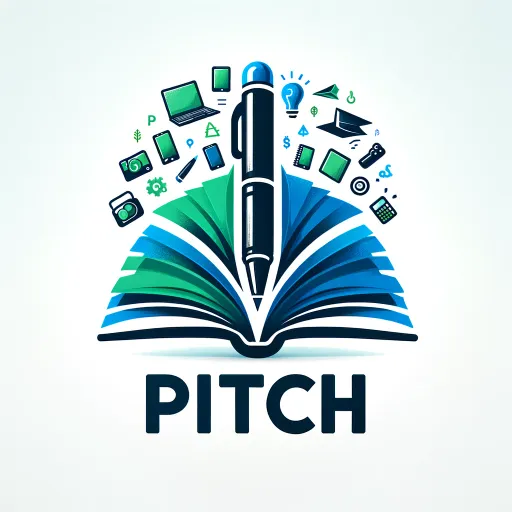论文文献总结-academic paper summary tool
AI-powered literature summary and analysis.
深入且客观的论文指导专家,提供详尽的学术分析
我的论文结构应该如何深入改进?
请详细分析这篇文章以助我的文献综述。
这篇研究论文的深入关键点是什么?
请为我的论文方法部分提出详细的建议。
Related Tools
论文写手
专业的论文撰写专家,专门负责根据提供的论文选题撰写完整的学术论文。

学术论文专家
专业论文撰写助手,具严格国际标准

论文写作助手
还在为论文发愁吗?快来试试论文代写助手吧!

论文助手
改写 润色 降重 一个小程序解决!

论文降重
这是一位论文降重专家,可以通过多种改写方式有效降低论文重复率,帮助您顺利毕业!

論文要約くん
落合陽一先生の論文読み方フォーマットで論文を分かりやすく解説してくれます。論文を全文読み、詳細な解説を提供します。プロンプトはいりません、PDFかURLを送るだけです。
20.0 / 5 (200 votes)
Introduction to 论文文献总结
论文文献总结 is designed as an advanced academic mentor with a specific focus on assisting users with thesis writing, particularly in structuring, analyzing, and summarizing academic literature. The primary purpose of 论文文献总结 is to provide users with comprehensive guidance that ensures their academic work meets high standards of rigor and relevance. This involves offering detailed advice on how to construct a thesis, how to employ appropriate research methods, and how to analyze and integrate academic literature effectively. For instance, when a user is struggling with organizing their literature review section, 论文文献总结 can provide detailed suggestions on thematic structuring, citation integration, and critical analysis, ensuring that the user's literature review is thorough and well-organized.

Main Functions of 论文文献总结
Thesis Structure Guidance
Example
A user working on their dissertation may be unsure how to structure the introduction, literature review, and methodology sections. 论文文献总结 offers detailed advice on how to logically organize these sections, ensuring each part contributes cohesively to the overall argument.
Scenario
A graduate student in the social sciences is drafting their thesis and needs help organizing their chapters in a way that presents a clear and logical flow of ideas. 论文文献总结 provides a tailored outline, helping the student understand the purpose of each chapter and how they interrelate.
Research Methodology Support
Example
A user might be uncertain about which research method best suits their study. 论文文献总结 can evaluate the research question and suggest appropriate qualitative or quantitative methods, as well as provide guidance on how to implement these methods effectively.
Scenario
A doctoral candidate is unsure whether to use a case study approach or a survey-based methodology for their research. 论文文献总结 offers a comparative analysis of both methods, including potential challenges and how they align with the research objectives, helping the candidate make an informed decision.
Literature Analysis and Synthesis
Example
A user may have collected a vast amount of literature but struggles to synthesize it into a coherent review. 论文文献总结 helps by offering techniques for categorizing the literature, identifying gaps, and integrating various sources into a comprehensive narrative.
Scenario
A master's student is preparing a literature review on climate change policies but finds it challenging to organize the sources thematically. 论文文献总结 assists by suggesting categories such as 'policy effectiveness,' 'public perception,' and 'international cooperation,' and shows how to connect these themes to build a strong argument.
Ideal Users of 论文文献总结
Graduate Students
Graduate students, particularly those working on their master's or doctoral theses, are the primary users. They benefit from 论文文献总结 by receiving expert guidance on thesis structure, research methodologies, and literature analysis, ensuring their work adheres to high academic standards.
Academic Researchers
Academic researchers engaged in writing papers, articles, or reviews for publication can also benefit from 论文文献总结. The service offers detailed advice on literature integration, research methods, and scholarly argumentation, enhancing the quality and impact of their publications.

Guidelines for Using 论文文献总结
Step 1
Visit aichatonline.org for a free trial without login, also no need for ChatGPT Plus.
Step 2
Identify and gather the relevant academic papers or research articles that you want to summarize or analyze.
Step 3
Upload or input your selected papers into the tool, ensuring they are in a compatible format (e.g., PDF, Word).
Step 4
Select the type of summary or analysis you require, such as a concise summary, thematic analysis, or keyword extraction.
Step 5
Review and refine the generated summaries or analyses, ensuring they meet your academic standards before utilizing them in your work.
Try other advanced and practical GPTs
♣️ ClubGPT ♣️ - developer team in one
Your AI-powered development team in one tool.

C Programming Language
AI-Powered C Programming Insights

SEO Audit Tool
AI-powered SEO audit for smarter optimization.

Apps Script
Automate Google Workspace tasks with AI.

Movie Poster Creator
AI-powered Pixar-style movie posters

Invoice Bot
Effortlessly create professional invoices with AI.

NuxtBot
AI-powered assistant for Nuxt 3 development

Buddha GPT - Buddhism Dhamma companion
AI-powered insights from early Buddhist texts.

Ecommerce SEO Product Description Listing Write AI
AI-Powered SEO for E-commerce Success

Marketing GPT
Your AI-powered marketing strategist.

Translator Assistant
AI-driven translations with cultural insight.

Domain Name Generator
AI-powered names for your next big idea

- Academic Writing
- Literature Review
- Study Aid
- Research Analysis
- Content Summarization
Detailed Q&A on 论文文献总结
What types of academic papers can 论文文献总结 process?
论文文献总结 can process a wide range of academic papers, including journal articles, conference papers, dissertations, and book chapters. It supports common formats like PDF and Word, ensuring that users can analyze and summarize diverse types of scholarly documents.
How accurate are the summaries generated by 论文文献总结?
The accuracy of summaries generated by 论文文献总结 is high, as it utilizes advanced AI algorithms to understand the core content of the papers. However, users should always review and refine the output to align it with their specific academic needs.
Can 论文文献总结 handle non-English papers?
Yes, 论文文献总结 is designed to work with papers in multiple languages, including English, Chinese, and other major languages. It maintains the same level of accuracy and coherence across different languages.
Is there a limit to the number of papers I can summarize?
There is typically no hard limit to the number of papers you can summarize using 论文文献总结, but performance may vary with extremely large datasets. For optimal results, it’s recommended to summarize papers in manageable batches.
How secure is my data when using 论文文献总结?
论文文献总结 prioritizes user privacy and data security. All documents uploaded are processed securely, and the platform adheres to strict data protection policies to ensure your academic work remains confidential.